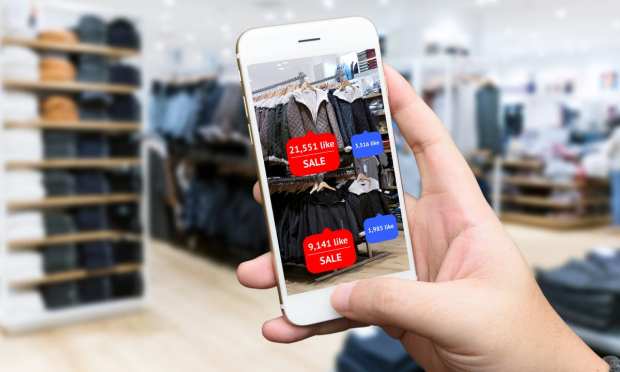Verizon, Mastercard Use 5G To Reimagine Point Of Sale

Standing in line, waiting for the point of sale to open up, getting ready to swipe the card … feels so yesterday.
Pre-pandemic, in fact.
Joel Henckel, senior vice president, merchants and acceptance, North America and Femi Odunuga, senior vice president, digital future planning at Mastercard told PYMNTS that their firm’s joint efforts harnessing and promoting 5G will change the way we shop, bridging the continuum between online and physical commerce.
And, down the road, low-latency digital interactions and constant communication between devices, as part of the Internet of Things (IoT), will bring new use cases to consumers heretofore yet to be imagined.
To that end, Verizon Business and Mastercard said earlier in the month that they would partner to bring 5G technology to payments.
Connecting The Ecosystems
As Henckel told PYMNTS, Verizon and Mastercard’s respective networks connect billions of consumers, businesses, banks, and governments. “We’ve got the framework to connect these important ecosystems together,” he said.
In terms of the mechanics, the companies will link together to work on immersive retail technology, new point of sale functionality, automated checkout and other digital capabilities for small and medium-sized businesses (SMBs).
The joint development efforts will take place at Mastercard’s New York City Tech Hub, in the Flatiron District. Mastercard and Verizon will test and embed 5G to accelerate the pace of innovation and collaboration. Together, Mastercard and Verizon plan to explore 5G and Mobile Edge Computing technology and use cases, while also enhancing the overall experience for Mastercard employees.
Drilling down a bit, the firms will “unlock” IoT sensor connectivity with near real-time edge computing to discover what Odunuga termed the “art of the possible.”
That computing power will enable the FinTech, payments and banking industries to in turn lead their SMB clients to accept contactless payments, where it is the mobile phone itself that becomes the acceptance device.
Elsewhere, in a near-term use case, Verizon will tap into Mastercard’s Bill Pay Exchange to enable real-time interactions between consumers and billers.
Henckel said that the greater data speeds and low-latency characteristics of 5G will increase the throughput of information (and payments) to reimagine what the point of sale might be. Payments, he said, should not be thought of as simply a swipe of a card that sends a transaction from point A to point B.
As Odunuga said, “commerce in place — in-store that is — will change based on the speed.” 5G, he said, can reduce the amount of time it takes to “turn around” a transaction by as much as 50 percent to 70 percent. Perhaps that’s not all that noticeable to the casual observer, but then again, increased throughput winds up increasing enterprises’ top lines, and lowers the costs of the transactions themselves, which helps boost operating margins. Odunuga also said that the enhanced connectivity of the 5G offerings can help merchants and the payment networks add in loyalty and other rewards offerings to the in-store interactions.
AR/VR
Before too long, we might see more streaming-media type interactions in the brick-and-mortar retail settings, where wearable and augmented reality/virtual reality (AR/VR) become part of the experience.
Looking ahead, Henckel said the partnership between Mastercard and Verizon has provisions in it that allow the companies to, potentially, co-invest in other entities that have plans to scale using 5G. Henckel and Odunuga told PYMNTS that more efficiency at the point of sale will have positive ripple effects for enterprises, as they need smaller physical footprints to run their operations and better manage inventory (autonomous delivery may be part of last mile, connected commerce advances, too).
The advent of 5G also means that smaller firms — the car washes, the vending machine operators and of course the mom-and-pop storefronts — get to have the same computing power as much larger competitors and need no longer be shackled to the terminal.
“We can actually pack more features into that same solution, at low cost to merchants,” said Odunuga.
Added Henckel, “Over time, other use cases that we haven’t even thinking about today might very well come out of this partnership.”
